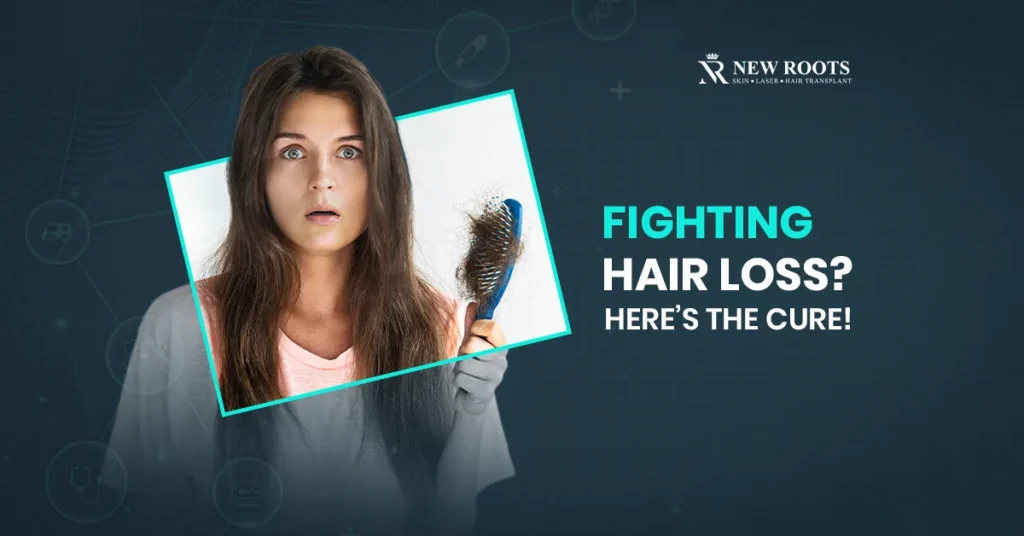It is important for everyone who suffers from the various problems associated with thinning hair or even baldness to find good hair loss treatments.
Given the over-the-counter medicines for compounded operations in hospitals, the key here is to know what works for your kind of body.
Contemporary hairstyles provide unraveling guises for managing hair loss that come with as many functional benefits as they do psychologically.
Hair transplants, alongside surgeries, are involved in the treatment, as well as PRP therapy and topical solutions.
Getting the first step towards solving hair loss can give you a permanent solution to make sure you get back not only the hair but also the self-esteem that comes with having a healthy head of hair. Learn more and redesign yourself today.
Introduction
Hair restoration is the only permanent method in the landscape of hair loss treatments, with the help of transplants.
With the problem of baldness and thinning hair increasing among the populace, hair transplantation provides a reliable option for solving this problem and getting reasonable, natural-looking hair.
A detailed view of hair loss, along with the probabilities, causes, and psychosocial impact of the problem, is discussed in this article; however, a pool of advantages of hair transplant surgery is also highlighted.
In turn, we will include examples of these facilities, such as New Roots, to illustrate the crucial roles they perform regarding such change-induced procedures.
Hair transplant surgeries, therefore, open up a chance for people to have their hair back with the bonus of self-confidence and quality of life.
Table of Contents
Understanding Hair Loss
Hair loss is a problem irrespective of sex and has profound impacts on self-image and standard of living. It is also important to identify the causal factors to decide an appropriate response.
Causes of Hair Loss
Several factors contribute to hair loss, including:
Hormonal Changes: Scientifically, hormonal imbalances during menopause, or androgens in male pattern baldness, could cause hair thinning.
Genetic Predisposition: Pattern baldness is no different from the general type of hair loss and can be inherited in both male and female individuals.
Medical Conditions: This is also true of autoimmune diseases and scalp infections that significantly contribute to hair loss.
Hereditary Hair Loss
The smallest shedding or balding is associated with hereditary hair loss, also known as androgenetic alopecia. It is manifested by a special type of hair loss and, in most cases, requires complex therapies such as hair restoration.
Lifestyle Factors
Diet, stress levels, and hair care regimes have a very important part to play in hair health. Androgenetic alopecia is when the hair becomes thin and either completely fails to grow back or grows very slowly as a result of poor nutrition and high stress. This means that lifestyle modification is also important in treating this condition.
Hair Loss: Emotions and Health Consequences
The consequences of hair loss are best understood psychologically. People who lose hair can be depressed and anxious, with low self-esteem.
That psychological aspect has to be managed in the hair loss treatment plan, which is why hair loss treatment is not limited to the physical level alone.
The Nature of Temporary Solutions vs Permanent Solutions
Temporary Solutions: Hairstyling accessories such as wigs and hairpieces are easily found, as well as hair styling products for hair loss.
Lack of Addressing Root Causes: These methods, however, do not address the root cause of the problem that causes hair loss.
Short-Term Fix: Solutions that are temporary at best are only as good as the short-term positive consequences of their use.
Ongoing Maintenance: Patient need to constantly update these products, defying the market’s cardinal rule of less investment and effort in the long run.
Hair Transplantation: On the other hand, hair transplants give us a permanent solution for the problem of baldness.
Natural Results: By and large, this procedure always contributes to regaining a natural look and added volume.
Long-Term Satisfaction: One input, therefore, is that patients get long-term results that help improve their self-esteem and their quality of life.
Hair Transplant Techniques
FUT Technique
FUT, more frequently called strip surgery, is a conventional technique of hair restoration. The dissection technique involves the removal of a strip of scalp from the donor area, and then it is sliced into several follicular units for implantation.
FUE Technique
Follicular Unit Extraction is an extra superior technique that includes extracting male or woman hair follicles from the scalp. This technique is extra sparing, produces little scarring, and is suggested for those patients who want to hold their hair brief.
Importance Of Hair Loss Treatments
It is also important to organize the work so that hair transplantation not only looks pleasant but is also individually useful. They include:
Natural Results: These hairs are functional, make the necessary growth, and retain functional qualities when replanted.
Permanent Solution: As against many topical treatments, once the hair has been transplanted, these will remain effective throughout the lifetime.
High Satisfaction Rates: Research on most patients’ perceptions of SAT reveals satisfaction with the surgeries, as mean ratings are notably high due to better looks and esteem.
The Procedure in Hair Transplantation
A typical hair transplant procedure involves the following steps:
Consultation: A review by a professional surgeon to decide whether the person qualifies or not.
Preparation: The donor area is readied for graft removal, and local anesthesia is used.
Extraction and Transplantation: They are taken and implanted in the regions that are experiencing thinning of hair.
Recovery: Surgery involves all-around attention and care to aid in the after-surgery recovery process.
Post-Operative Care
It is still important to know how to properly care for your results, and that is where after-surgical care comes in. Patients are advised to:
Obey all the words said by the surgical team.
Exercise caution for a few weeks; refrain from lifting heavy objects.
There are list-prescribed drugs that promote hair growth, such as Minoxidil or Finasteride.
PRP therapy should be considered as an option for boosting your healing process.
Cost Of Hair Loss Treatments
The rate of a hair transplant depends on the method used, the quantity of hair follicles needed, and the health facility where the method is executed. Here’s a summary of estimated prices:
| Location | Average Cost |
| USA | 12 lakh |
| UK | 8.5 lakh |
| Turkey | 7 lakh |
For instance, New Roots Clinics may include reasonable, low charges for their services and deliver quality professional services.
| Procedure | Price Range (INR) |
| Minoxidil Treatment | 3,000 – 5,000 |
| PRP Therapy | 10,000 – 15,000 per session |
| FUE Hair Treatment | 400,000 – 500,000 |
| FUT Hair Transplant | 300,000 – 500,000 |
| DHI Hair Transplant | 200,000 – 700,000 |
| Sapphire FUE | 50,000 – 600,000 |
| Consultation Fee | 500 – 1,500 |
| Method | Price Range (per graft) |
| FUT | ₹75 – ₹200 |
| FUE | ₹90 – ₹200 |
| Robotic Hair Transplant | ₹100 – ₹250 |
| Bio FUE Hair Transplant | ₹120 – ₹300 |
Choosing the Right Clinic: New Roots - Skin, Laser & Hair Transplant Clinic
Choosing a clinic is one of the critical factors that define the results of the procedure. New Roots is committed to providing personalized care with:
Skilled Surgeons: Credentialed personnel executing current methods and skills.
State-of-the-Art Facilities: Introducing a range of solutions in hair restoration using the most sophisticated technologies.
Comprehensive Care: A particular concentration on offering all-inclusive post-operative care to boost patient rehabilitation.
Conclusion
Baldness remains a silent epidemic that has defied scientists until recently, with the development of hair transplants that provide a permanent solution.
Knowledge of the reasons, processes, and management can assist people in making proper decisions regarding the hair replacement process.
By visiting clinics such as New Roots, patients are in a position to get the surgeons they require to bring back their self-esteem and vitality.
Q&A ASK:
The main hair loss therapy requires drugs like minoxidil and finasteride, hair transplant procedures, and PRP therapy, along with the modification of the diet and the overall quality of life.
Minoxidil is one of the hair loss treatments that has been approved with the aid of the Meals and Drug Administration, which can promote hair growth and halt hair loss. One should begin the usage of it multiple months earlier than starting modifications, which can differ from one person to another.
FUT requires having a strip of skin on the scalp to be taken to take the follicles, while FUE involves the extraction of the follicle by follicle. They both are used for hair restoration, but FUE has the added advantage of resulting in a smaller scar as compared to FUT. Hence, it is usually performed more frequently.
Yes, healthy behavior can or will help beautify the remedy of hair loss. Maintaining the right diet, exercise, and decreasing pressure have additionally assisted with the health of the hair and may even reduce hair loss.
Nevertheless, hair loss treatments are considered to be a good permanent cure for people experiencing hair issues. When the hair follicles are transplanted, they immediately start to grow as usual and hence are recommended as a permanent solution as opposed to other methods.
Viable aspects of some hair loss remedies are pores and skin itching or redness of the scalp, increased unwanted hair growth on the face and other body areas in girls, and erectile disorder in men. Please search for the opinion of a healthcare issuer to comprehend the hazard elements associated with each brand.
Hair-regrowing techniques may differ. Some drugs, such as minoxidil, take up to three to six months before changes are visible, while the hair-transplanted region starts to grow new hair in six to twelve months post-surgery.





